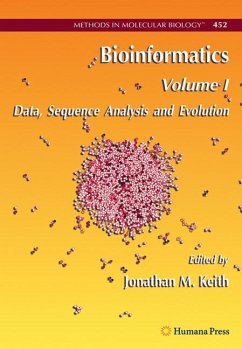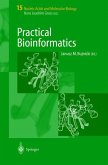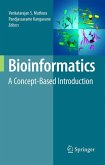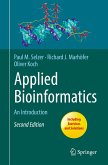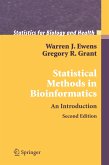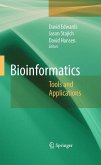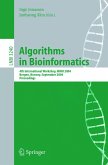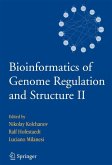Not only is the quantity of life science data expanding, but new types of biological data continue to be introduced as a result of technological development and a growing understanding of biological systems. Methods for analyzing these data are an increasingly important component of modern biological research. In Bioinformatics, leading researchers in the field provide a selection of the most useful and widely applicable methods, able to be applied as is, or with minor variations, to many specific problems. Volume I: Data, Sequence Analysis and Evolution examines a selection of methods involving the generation and organization of data, including sequence data, RNA and protein structures, microarray expression data and functional annotations, methods for discovering the functional components of genomes, whether they be genes, alternative splice sites, non-coding RNAs or regulatory motifs, and several of the most interesting methods in phylogenetics and evolution.
From the reviews:
"This precise description of all current molecular biology techniques is an important addition to the field of bioinformatics. The purpose is to provide a 'detailed description and implantation advice' about current molecular biology techniques. ... the book is written primarily for students and beginning bioinformatics researchers. ... The authors have included both an index and an evolution index at the end, which will be very helpful to readers. This is a very good reference for students who are beginning level bioinformatics researchers." (Basabi Rana, Doody's Review Service, September, 2008)
"Bioinformatics is presented ... with a total of 51 chapters. ... successfully cover the wide field of bioinformatics, providing many useful methods, the majority of which are accessible to the non-specialist. ... will serve as a valuable reference and therefore may be most appropriate as an institutional purchase." (Conrad Nieduszynski, Microbiology Today, February, 2009)
"Volume I comprises 24 chapters that describe topics in sequence analyses, phylogenetics, genome evolution, and gene expression analysis. ... Several chapters highlight how to integrate and visualize local analyses ... . give relatively in-depth coverage of many concepts that are applied by bioinformatics specialists. ... Many of the chapters are example driven, with basic forays into bioinformatics analyses that will educate readers in both the theory and practical matter of running the analyses." (Jason E. Stajich, The Quarterly Review of Biology, Vol. 84, September, 2009)
"The goal of the book is to cover different types of data and their analysis methods for biological discovery, each of its 24 chapters is written by an expert in the field and can be read independently of the others. ... describes the most widely used techniques. ... easily accessible to a large audience involved in utilizing and developing bioinformatics. ... a wonderfulbook for nonspecialists to enter the field of bioinformatics, but also a comprehensive handbook for specialists, when they need a good reference." (Hsun-Hsien Chang, ACM Computing Reviews, June, 2009)
"This precise description of all current molecular biology techniques is an important addition to the field of bioinformatics. The purpose is to provide a 'detailed description and implantation advice' about current molecular biology techniques. ... the book is written primarily for students and beginning bioinformatics researchers. ... The authors have included both an index and an evolution index at the end, which will be very helpful to readers. This is a very good reference for students who are beginning level bioinformatics researchers." (Basabi Rana, Doody's Review Service, September, 2008)
"Bioinformatics is presented ... with a total of 51 chapters. ... successfully cover the wide field of bioinformatics, providing many useful methods, the majority of which are accessible to the non-specialist. ... will serve as a valuable reference and therefore may be most appropriate as an institutional purchase." (Conrad Nieduszynski, Microbiology Today, February, 2009)
"Volume I comprises 24 chapters that describe topics in sequence analyses, phylogenetics, genome evolution, and gene expression analysis. ... Several chapters highlight how to integrate and visualize local analyses ... . give relatively in-depth coverage of many concepts that are applied by bioinformatics specialists. ... Many of the chapters are example driven, with basic forays into bioinformatics analyses that will educate readers in both the theory and practical matter of running the analyses." (Jason E. Stajich, The Quarterly Review of Biology, Vol. 84, September, 2009)
"The goal of the book is to cover different types of data and their analysis methods for biological discovery, each of its 24 chapters is written by an expert in the field and can be read independently of the others. ... describes the most widely used techniques. ... easily accessible to a large audience involved in utilizing and developing bioinformatics. ... a wonderfulbook for nonspecialists to enter the field of bioinformatics, but also a comprehensive handbook for specialists, when they need a good reference." (Hsun-Hsien Chang, ACM Computing Reviews, June, 2009)

